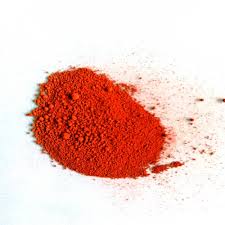Overview of Oxide powder:
Oxide powder is a compound solid powder containing one kind of oxygen and another element, such as metal oxide, which is a compound formed between metals, specifically cations such as Na, K, Li, etc., and oxygen. These compounds require at least two elements, like compounds, and always contain at least one oxygen, although there may be more than one. These structures tend to be solid, basic, and denser than nonmetal oxides. Metal oxides usually contain an oxyanion with an oxidation state of −2. A good example is iron oxide, commonly known as rust, which is the result of prolonged exposure of iron to oxygen-rich environments. Metal oxides can be easily obtained in nature or in the reaction of metals with acids. To obtain high-purity metal oxide powders, nanometallization is necessary.
Application of Oxide Powder:
Oxide powders and metal oxides are widely used in our daily life. Quicklime is a commonly used desiccant and can also be used for disinfection; iron oxide (Fe2O3), commonly known as iron red, can be used as a red pigment; some catalysts used in industrial processes are also metal oxides. Metal oxides are an important class of catalysts and have been widely used in the field of catalysis. After nano-metallization, the catalytic performance is better. It can be predicted
that nanometer metal oxides will be an important direction for the development of catalysts.

Oxide powder supplier:
We provide high-purity ATO powder, ITO powder, indium oxide, silicon dioxide, tungsten oxide, manganese dioxide, nickel oxide, bismuth oxide, cuprous oxide, zinc oxide, zirconia, titanium oxide, aluminum oxide , tungsten oxide, chromium oxide and other oxide powders. Contact us by email or choose the items you want to contact us with an inquiry.

Payment Term:
T/T, Credit Card, Western Union, Paypal etc.
Term for delivery:
By air, courier or by sea according to the needs of the customer.
Conditions of storage:
1.) Maintain a dry area at the temperature of room.
2.) Avoid high and damp temperatures.
3.) Utilize immediately following the opening of the bag inside.
FAQ:
Q1:
What are the properties of oxide powder?
Re:Color: Many oxide powders have a specific color, such as iron oxide (rust) is usually reddish-brown, zinc oxide (zinc powder) is white, and titanium dioxide (titanium dioxide) is white.
Chemical stability: Some oxide powders have high chemical stability, such as silicon dioxide, titanium dioxide, etc., and are not easy to react with other substances.
Thermal stability: Some oxide powders, such as sodium oxide and potassium oxide, are easy to decompose, or REDOX reactions occur at high temperatures.
Magnetic: Some oxide powders have magnetic properties, such as ferric oxide.
Conductivity: Some oxide powders have good conductivity, such as copper oxide, silver oxide, and so on.
Hardness: Some oxide powders have higher hardness, such as silicon dioxide, titanium dioxide, etc.
Q2:
What are the uses of oxide powder in the industry?
Re:Pigments and coatings: Many oxide powders have color properties and can be used as components in pigments or coatings, such as iron oxide (rust red pigment), titanium dioxide (titanium dioxide, a white pigment), etc.
Electronics and semiconductor industry: Some oxide powders, such as copper oxide, zinc oxide, etc., are conductive or semi-conductive and can be used in the electronics and semiconductor industry.
Magnetic materials: Some oxide powders, such as ferric oxide, are magnetic and can be used to make magnetic materials.
Catalyst: Some oxide powders, such as alumina, titanium dioxide, etc., can be used as catalyst carriers or active ingredients.
Protective coatings and wear-resistant materials: Some oxide powders, such as silicon dioxide, titanium dioxide, etc., have higher hardness and can be used as components of protective coatings or wear-resistant materials.
Chemical reactants: Some oxide powders, such as manganese dioxide and sulfur dioxide, can be used as chemical reactants.
Food additives: Some oxide powders, such as silicon dioxide, magnesium oxide, etc., can be used as food additives.
Q3:
How are oxide powders used in industry?
Re:As a raw material in the electronics and semiconductor industry, some oxide powders, such as copper oxide, zinc oxide, etc., are conductive or semi-conductive and can be used in the electronics and semiconductor industry. These oxide powders can be made into electronic components or semiconductor devices.
As a catalyst carrier or active ingredient: some oxide powders can be used as a catalyst carrier or active ingredient, such as alumina, titanium dioxide, etc. Using oxide powder as a catalyst carrier in various chemical reactions can accelerate the reaction rate and improve the purity of the product.
As raw materials for the ceramic and glass industry, oxide powder can be used as raw materials for the ceramic and glass industries such as alumina silicon dioxide, etc. The oxide powder is mixed with other natural materials, and after high-temperature melting, sintering, and other processes, ceramic or glass products are made.
As wear-resistant materials or protective coatings: Some oxide powders, such as silicon dioxide, titanium dioxide, etc., have higher hardness and can be used as components of wear-resistant materials or protective coatings. Oxide powder is mixed with other raw materials to make a coating or wear-resistant material used to protect the surface of equipment or materials from wear or corrosion.
Q4:
What are industrial oxide powders?
Re:Industrial oxide powders include but are not limited to alumina, zirconia, titanium dioxide, zinc oxide, silicon oxide, chromium oxide, cermet powder, etc. These oxide powders can be selected and applied according to their characteristics and uses. For example, alumina powder can be used as a raw material for ceramic and metal composites, etc.
Q5:
Precautions for the use of oxide powder?
Re:Maintain good ventilation: In places where oxide powder is used, good ventilation should be maintained to reduce the concentration of powder in the air and avoid long-term inhalation or exposure.
Avoid fire sources and high temperatures: Some oxide powders may be flammable or explosive and should be avoided in contact with fire sources or in high-temperature environments.
Storage and transportation: When storing and transporting oxide powder, it should be stored in a dry, well-ventilated place, away from fire sources and organic matter. At the same time, the oxide powder should be prevented from being impacted or rubbed to avoid dust explosions or harmful gases.
Understand the properties of oxide powder: Before using oxide powder, its properties should be understood, including its physical and chemical properties, toxicity, irritation, etc., in order to choose better and use.
Follow safe operating procedures: When using oxide powder, you should follow safe operating procedures to avoid accidents. If you feel unsafe or abnormal, stop using immediately and seek professional help.

